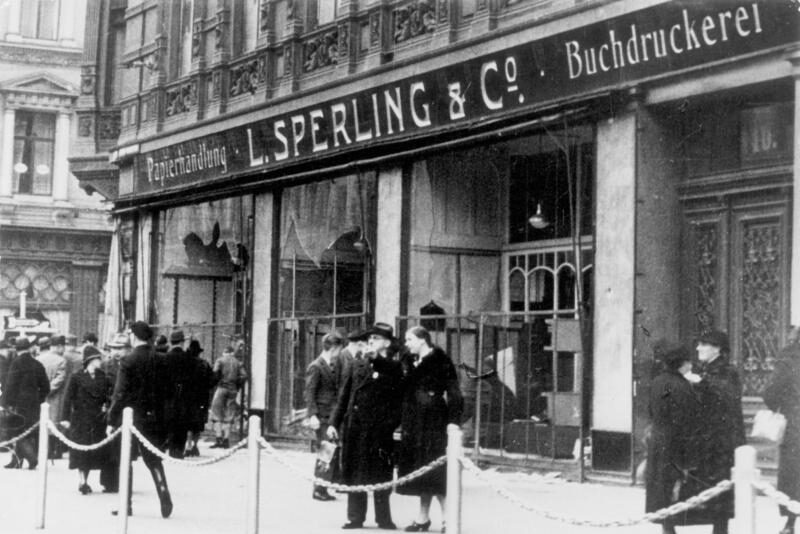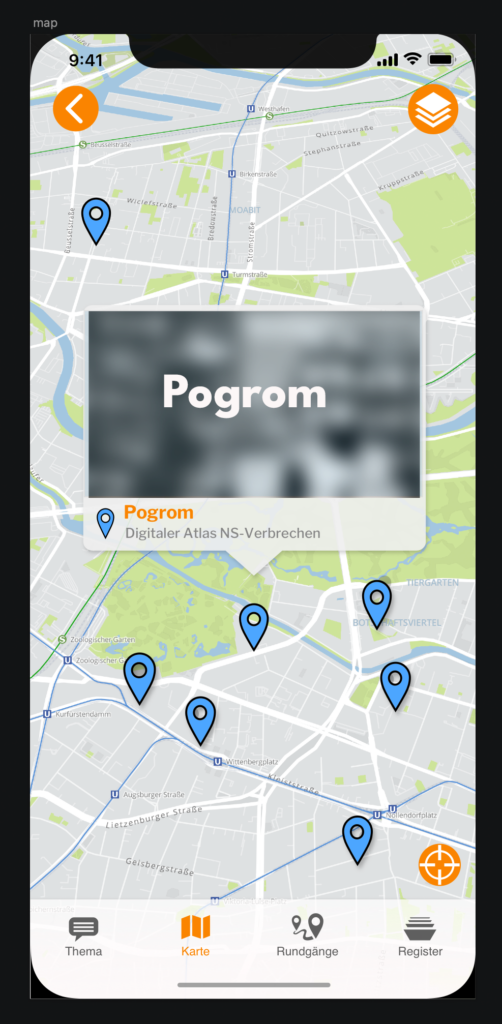The project
We promote the confrontation with Nazi injustice and the remembrance of the historical context with a new format. Data from a previous research project is being processed for the NaziCrimesAtlas: The index of court files on Nazi crimes comprises around 25,000 items of data – and these are only those on the territory of today’s Federal Republic of Germany. There will be a pin on the map for each crime in the NaziCrimesAtlas.

Our approach:
Racism, anti-Semitism and attacks on liberal democracy are still present in all parts of Germany 80 years after the end of Nazi rule. This makes it all the more important to provide information about historical contexts, causes and consequences. The culture of remembrance is changing and should be anchored in the minds of new generations – with new forms of media communication.
The association dieKunstBauStelle e. V. in Landsberg am Lech has repeatedly commemorated recent German history with various projects, in particular the crimes committed in Landsberg itself: Adolf Hitler was imprisoned here in 1924 after his 1923 coup failed, and wrote parts of his pamphlet “Mein Kampf”; One of the largest subcamp complexes in Bavaria was nearby; After the end of the war, displaced persons lived in camps in Landsberg. The association is involved in participatory and digital projects on the culture of remembrance.
How does the app work?
Each location of a Nazi crime is assigned a pin on the map.
Click on the pin to display information on historical facts in text and images as well as details of the sources.
The data includes Nazi crimes prosecuted after the war up to 1945 as well as sources and data collections on the Holocaust that document the scenes of Nazi crimes. The archives of the Yad Vashem Memorial, the Arolsen Archives and the Central Office in Ludwigsburg are used for further information. The atlas documents cases of Nazi injustice at thousands of locations in Germany.
The sources do not cover all the details of the respective crimes, but offer an introduction to research on the ground and provide an overview of the countless atrocities.
These were not only committed by official Nazi commandos, but also by individuals on their own responsibility. The crimes include denunciation, destruction or appropriation of property, physical violence and many other acts.
Some crimes are widely known, such as the destruction of Jewish institutions during the Reichspogromnacht on November 9, 1938. Others have fallen into oblivion or were later concealed. The app uses the map to visualize the extent of the crimes.

What is not covered?
From the first to the last day of the Nazi dictatorship, perpetrators and, to a lesser extent, perpetrators committed crimes first in Germany and later throughout Europe. The victims included Jews, Sinti and Roma, political opponents, the mentally and physically ill, resistance fighters, forced laborers, concentration camp prisoners and many others. It was not only high-ranking party functionaries or civil servants who contributed to the criminal regime by committing the most serious crimes, but people from all walks of life. The crimes took place not only in shooting pits and extermination camps in the occupied territories of Eastern Europe, but also throughout Germany.
After 1945, the victorious Allied powers and the German judiciary initiated investigations and trials to punish the crimes and bring the perpetrators to justice. Despite these efforts, some of which have lasted for decades, not all crimes have been solved and punished. There are many reasons for this: often all the victims were murdered so that no one could witness the crime. The evidence was often too thin, the perpetrators denied the crime and could not be convicted, had gone into hiding or had already died.
During the Cold War, political conditions in Eastern Europe hampered investigations by West German judicial authorities. In addition, West German case law often led to low sentences or acquittals by granting many perpetrators the status of accomplices. In addition, some judicial authorities destroyed files on National Socialist crimes of violence.
Against this background, the NaziCrimes app cannot depict all Nazi crimes. Its task is to record all Nazi crimes documented by sources that relate to places within the current borders of Germany.
After the death of most of the contemporary witnesses, we hope that the places where the crimes were committed will serve as a place of remembrance and commemoration.
We are presenting the app to the public in the hope that it will be further supplemented by civil society involvement.
